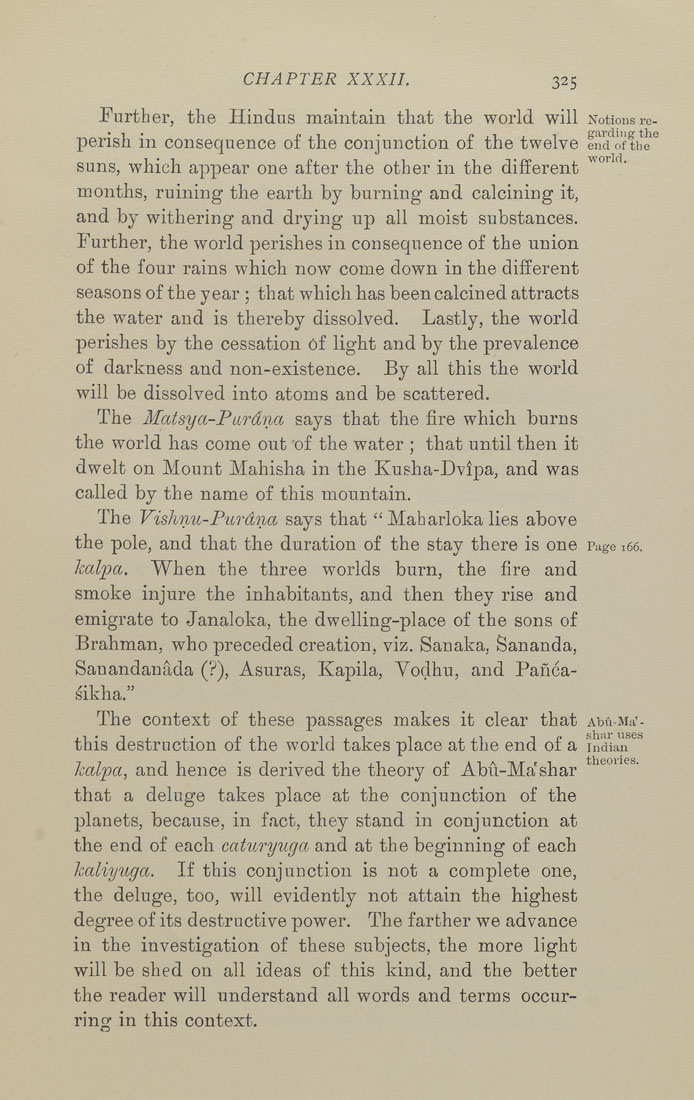Bīrūnī, Muḥammad ibn Aḥmad, Alberuni's India (v. 1)
(London : Kegan Paul, Trench, Trübner & Co., 1910.)
|
||
|
|
|
|
| Page 325 |

CHAPTER XXXII. 325 Further, the Hindus maintain that the world will Notions re- perish in consequence of the conjunction of the twelve fndofthe'' suns, which appear one after the other in the different months, ruining the earth by burning and calcining it, and by withering and drying up all moist substances. Further, the world perishes in consequence of the union of the four rains which now come down in the different seasons of the year ; that which has been calcined attracts the water and is thereby dissolved. Lastly, the world perishes by the cessation of light and by the prevalence of darkness and non-existence. By all this the world will be dissolved into atoms and be scattered. The Mcttsya-Purdna says that the fire which burns the world has come out of the water ; that until then it dwelt on Mount Mahisha in the Kusha-Dvipa, and was called by the name of this mountain. The Vishnu-Purdna says that "Maharloka lies above the pole, and that the duration of the stay there is one Page 166. kalpa. When the three worlds burn, the fire and smoke injure the inhabitants, and then they rise and emigrate to Janaloka, the dwelling-place of the sons of Brahman, who preceded creation, viz. Sanaka, Sananda, Sanandanada (?), Asuras, Kapila, Vodhu, and Panca- sikha." The context of these passages makes it clear that Abu-Ma'- this destruction of the world takes place at the end of a Indian kalpct, and hence is derived the theory of Abii-Ma'shar that a deluge takes place at the conjunction of the jolanets, because, in fact, they stand in conjunction at the end of each caturyuga and at the beginning of each kaliyuga. If this conjunction is not a complete one, the deluge, too, will evidently not attain the highest degree of its destructive power. The farther we advance in the investigation of these subjects, the more light will be shed on all ideas of this kind, and the better the reader will understand all words and terms occur- rinof in this context. theories. |
| Page 325 |







